Disclosure: This article contains affiliate links. We may earn a commission from purchases at no extra cost to you, which helps our travel content.
There's something about Dublin that feels familiar to me, like the gentle rocking of my houseboat on a calm evening. Perhaps it's the city's intimate relationship with water – the Liffey cutting through its heart like a lifeline, much as the canals of Europe have become mine. While most visitors queue for the Guinness Storehouse or jostle through Temple Bar, I've always been drawn to the quieter eddies of history in this maritime city. After decades studying the Great Lakes and now navigating Europe's waterways, I've developed an eye for overlooking treasures that tell the true stories of a place's relationship with water and time.
The Custom House Quay's Maritime Secrets
The Custom House itself is no secret, with its neoclassical grandeur commanding attention along the Liffey. But few visitors venture around to the river-facing quay where Dublin's maritime history unfolds in layers visible only to the patient observer.
Having spent my life reading the stories of water bodies, I find myself drawn here repeatedly during my Dublin sojourns. The quay once bustled with tall ships and trade vessels, the lifeblood of Dublin's economy flowing through its wooden docks. Today, I recommend bringing a compact binoculars to spot the subtle architectural details that reveal the quay's evolution – iron mooring rings, weathered stone steps disappearing into the water, and the ghost outlines of former warehouses.
One misty morning last autumn, I sat sketching the riverfront in my waterproof journal, when an elderly dockworker approached. 'You've got a sailor's eye,' he noted, before sharing stories of his grandfather loading wool onto ships bound for Liverpool – oral histories you'll never find in guidebooks but that connect you to Dublin's living maritime heritage.
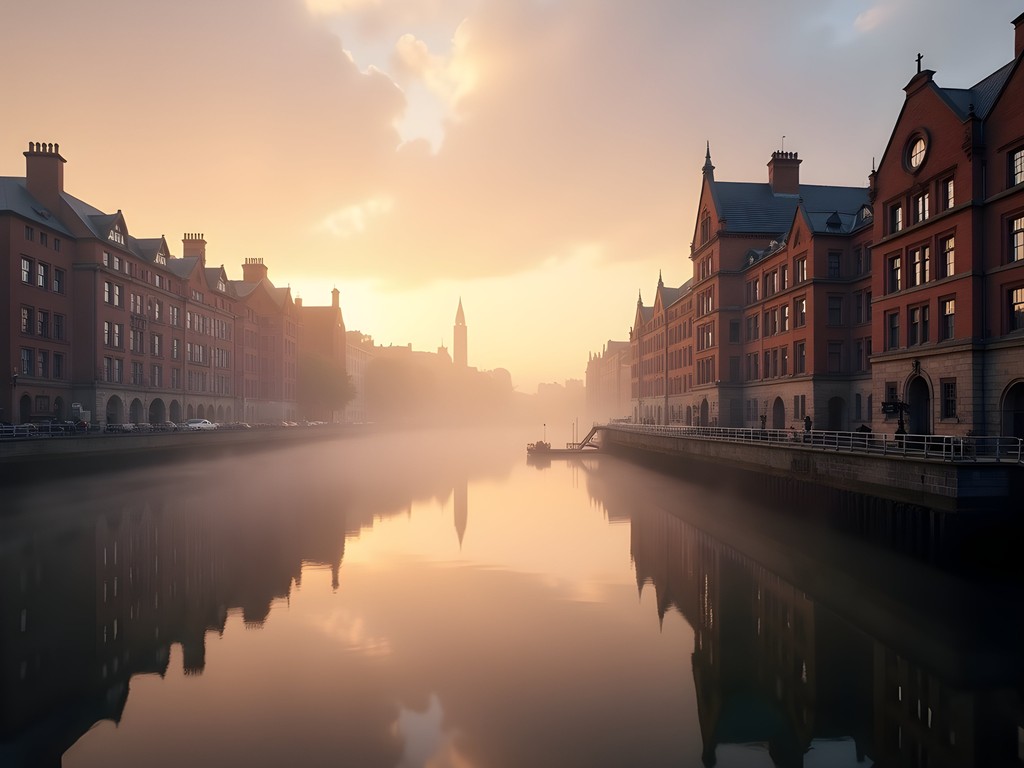
💡 Pro Tips
- Visit at low tide to see the original quay foundations exposed beneath the modern embankment
- Look for the small brass plaques indicating former shipping company headquarters
- The early morning light casts the most revealing shadows on the architectural details
The Diving Bell: Dublin's Underwater Engineering Marvel
Anchored on Sir John Rogerson's Quay sits one of Dublin's most overlooked maritime treasures – the enormous red Diving Bell. As someone who's spent countless hours beneath the surface documenting Great Lakes shipwrecks, I felt an immediate kinship with this 19th-century underwater engineering marvel.
Installed in 1871, this massive iron chamber allowed workers to descend to the riverbed to construct the quay walls that still define Dublin's waterfront. It's essentially a primitive submarine, lowered by crane while workers inside labored in compressed air to build foundations in the murky depths.
The bell has been beautifully restored as an exhibit you can actually enter, experiencing firsthand the claustrophobic conditions these underwater pioneers endured. The interior chamber now features informative panels detailing the bell's operation and the dangerous reality of 'the bends' that claimed many workers' lives.
As someone who's used modern diving equipment throughout my career, I found myself humbled by the ingenuity and courage of these Victorian underwater laborers. Their work literally created the foundation upon which modern Dublin stands, yet how many visitors ever notice this remarkable piece of maritime engineering?
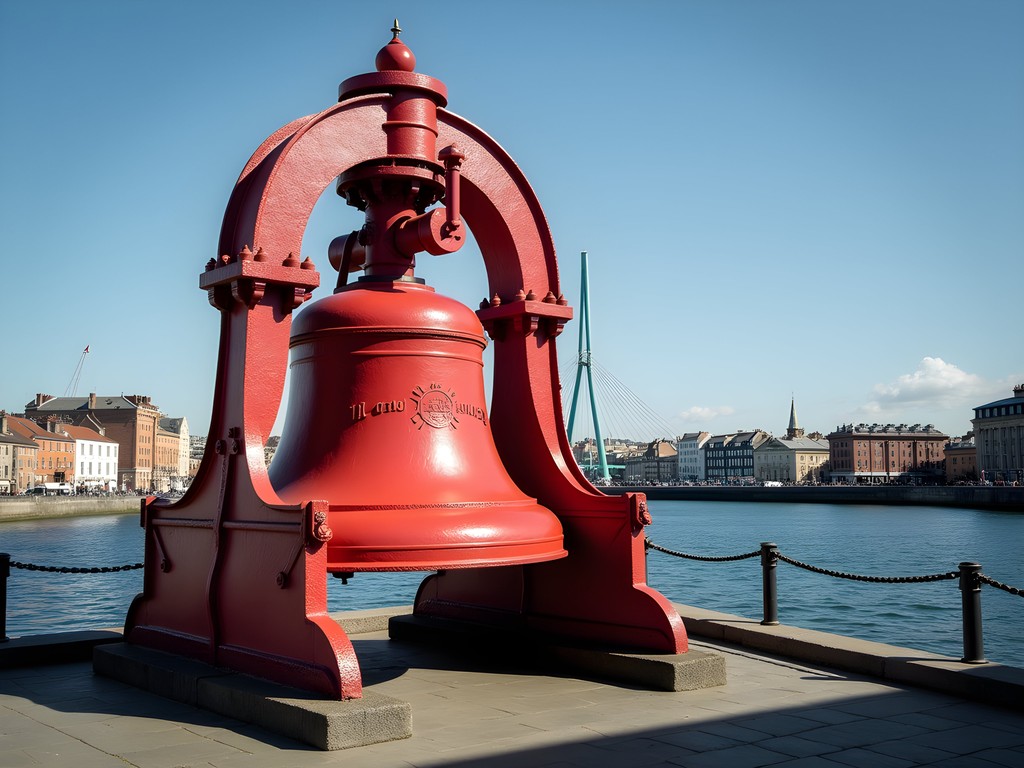
💡 Pro Tips
- Visit on weekdays to avoid the small weekend crowds that sometimes gather
- The interior exhibit is accessible via stairs, but those with mobility issues can view excellent exterior displays
- Combine with a walk along the entire quay system to appreciate the scale of what these underwater workers achieved
Poolbeg Lighthouse Walk: Dublin's Maritime Sentinel
Four kilometers of stone pathway extending into Dublin Bay – the Great South Wall culminating in the distinctive red Poolbeg Lighthouse represents my kind of pilgrimage. This remarkable 18th-century engineering feat predates even the famous Howth peninsula lighthouse and offers what I consider the definitive perspective on Dublin's relationship with the sea.
The walk itself requires proper preparation. I've made this journey in all seasons, and Dublin Bay's weather can turn remarkably quickly. I never venture out without my waterproof jacket and sturdy walking shoes. The granite blocks can be slippery when wet, and the wind often carries salt spray the entire length of the wall.
What makes this walk special is how it physically places you between worlds – the bustling port and city behind, the wild Irish Sea ahead, with ships passing within yards of the pathway. For someone who's spent a lifetime studying the meeting points between human activity and marine environments, it's a profound experience.
Reach the lighthouse at sunset, and you're rewarded with Dublin's industrial and natural heritage painted in golden light – container ships gliding past, Dublin Mountains rising behind the city, and seabirds wheeling overhead. I've recorded several podcast episodes here, the distinctive foghorn providing perfect atmospheric background as I discuss how ports like Dublin balance commerce and conservation.
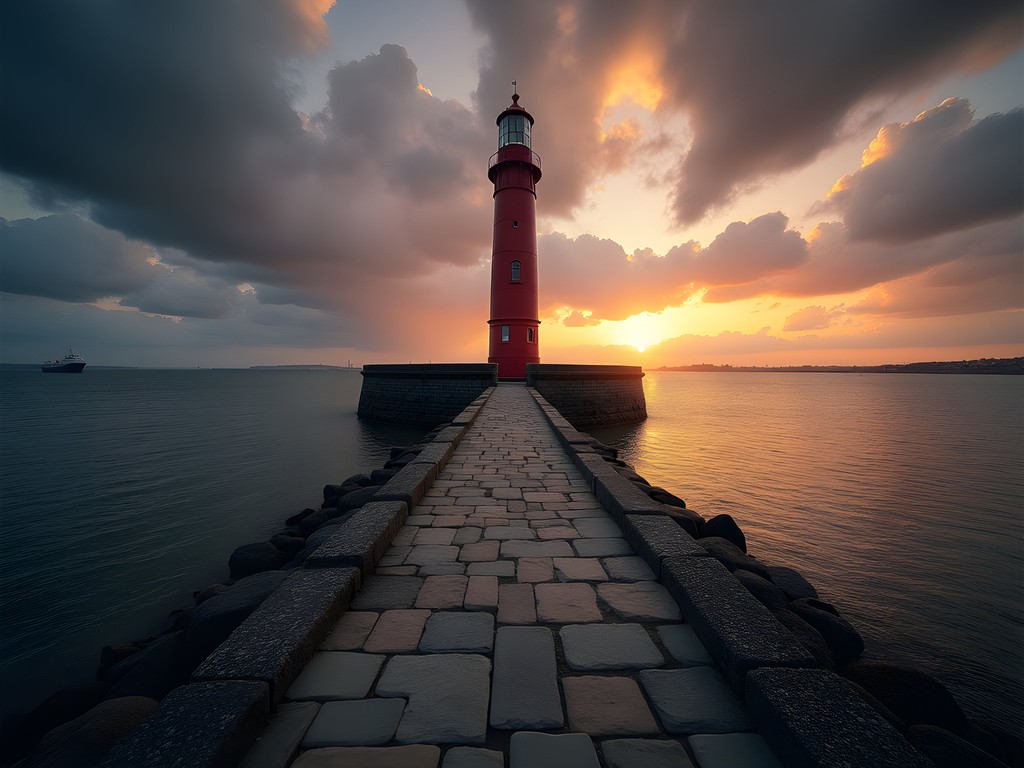
💡 Pro Tips
- Check tide tables before visiting – high tide with strong winds can make the walk hazardous
- Bring binoculars for excellent birdwatching and ship spotting opportunities
- Allow 2-3 hours for the round trip walk and time to fully appreciate the views
The Jeanie Johnston: Famine Ship with a Difference
Moored along Custom House Quay, the Jeanie Johnston tall ship reproduction offers something beyond the typical 'famine ship' narrative that dominates much of Ireland's maritime history. What drew me to this vessel wasn't just its beautiful restoration but its remarkable statistical anomaly – despite carrying over 2,500 starving emigrants across the Atlantic during the height of the Great Famine, the Jeanie Johnston never lost a single passenger or crew member to disease, starvation or drowning.
As someone who's lived aboard vessels for years now, I'm particularly attuned to how ship design affects human experience. The guided tour reveals how this vessel's enlightened captain and ship's doctor implemented revolutionary sanitation and quarantine measures that saved countless lives. The belowdecks reconstruction shows the cramped quarters where desperate families began their journey to North America – a space not unlike the forward cabin of my own modest houseboat, yet housing dozens.
What moved me most was examining the ship's manifest copies, seeing family names from my own Irish ancestry who may well have departed on similar vessels. I found myself recording audio notes throughout the tour for a future podcast episode on maritime migration, struck by how the Jeanie Johnston represents not just tragedy but also human ingenuity and compassion in the face of crisis.
For those interested in maritime history or genealogy, I recommend bringing a pocket notebook to record details from the ship's records that might connect to your own family history.

💡 Pro Tips
- Book the first morning tour for the smallest groups and best lighting for photographs
- Ask specifically about Dr. Richard Blennerhasset's medical innovations that kept passengers alive
- The upper deck offers excellent views of the Liffey and Custom House that most visitors miss while focusing on the famine story
The National Maritime Museum: Hidden in Plain Sight
Most visitors to Dublin never make the short DART train journey to Dún Laoghaire, missing what I consider the country's most underappreciated museum. Housed in the 180-year-old Mariners' Church, the National Maritime Museum of Ireland speaks directly to my lifelong fascination with maritime heritage.
What separates this from typical maritime museums is its location in a working harbor and its volunteer staff – mostly retired seafarers who bring the exhibits to life with personal experience. During my last visit, I spent two hours with Captain Michael Byrne (retired), whose knowledge of the exhibited navigation equipment surpassed the formal displays, as he demonstrated how to use a sextant with the precision that once guided him across oceans.
The museum's collection of handcrafted ship models demonstrates an artistry rarely appreciated in our digital age. I was particularly moved by the extensive exhibit on Irish lighthouses – having documented Great Lakes lighthouses for decades, I found fascinating parallels in how these structures served as both practical navigation aids and powerful cultural symbols.
For photography enthusiasts like myself, the museum's unique lighting conditions present both challenges and opportunities. I relied heavily on my tripod to capture the intricate details of ship models and navigation instruments without flash, preserving both the artifacts and the atmospheric quality of this converted church space.
After exploring the museum, walk along Dún Laoghaire's magnificent harbor walls – another overlooked maritime engineering marvel that creates one of the world's largest artificial harbors, a structure I discuss in depth on my podcast episode 'Harbors of Refuge: When Human Engineering Meets Natural Forces.'

💡 Pro Tips
- Time your visit to coincide with high tide in the harbor for the most dramatic seascapes from the museum's windows
- Request the excellent audio guide narrated by retired lighthouse keepers and ship captains
- The small research library contains rare maritime charts available to visitors upon request
Final Thoughts
As I sit aboard my houseboat this evening, reviewing my notes from Dublin's maritime corners, I'm struck by how water connects us across time and space. The same tides that carried famine ships from Dublin now lap against my floating home in Valencia. The navigation principles that guided ships into Dublin Bay guide my own modest journeys through Europe's canal systems. The engineering that built Dublin's quay walls finds echoes in waterfront developments worldwide.
Dublin reveals itself differently to those who seek its maritime soul. Beyond the familiar tourist haunts lies a city shaped by its relationship with water – a relationship that continues to evolve as Dublin reinvents its docklands while honoring its seafaring past. For couples seeking a more intimate connection with this remarkable city, these hidden maritime treasures offer both historical perspective and quiet moments of discovery together.
As with any port city I've documented in my travels, the true Dublin exists in the spaces where land meets water, where commerce meets culture, and where past meets present. Listen closely along the Liffey's banks, and you might just hear the echoes of a maritime heritage that continues to shape Ireland's capital in ways both visible and invisible to the passing visitor.
✨ Key Takeaways
- Dublin's maritime heritage reveals a deeper understanding of Irish history beyond the typical tourist narratives
- The city's relationship with water provides intimate perspectives for couples seeking authentic connections to place
- Many of Dublin's most significant historical sites are overlooked despite being hidden in plain sight
- The engineering marvels of Dublin's harbors, quays, and maritime structures tell stories of innovation and human ingenuity
📋 Practical Information
Best Time to Visit
year-round, though May-September offers most reliable weather for outdoor maritime sites
Budget Estimate
€100-150 per day for two people including accommodations, transportation and site admissions
Recommended Duration
2-3 days to explore maritime Dublin at a comfortable pace
Difficulty Level
Easy To Moderate, With Some Walking Required


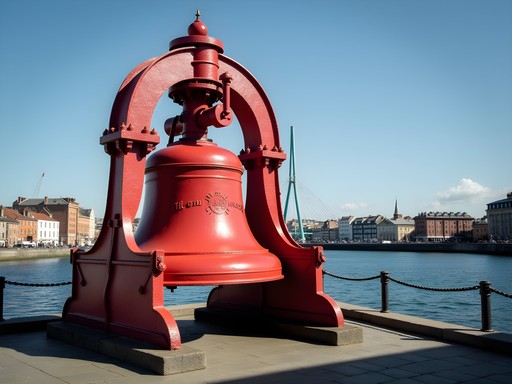
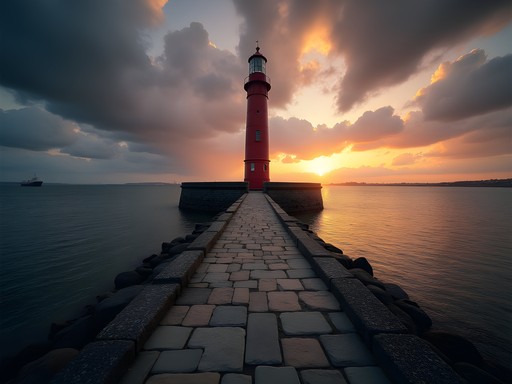

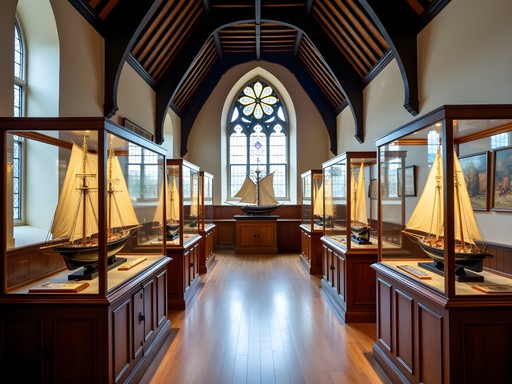







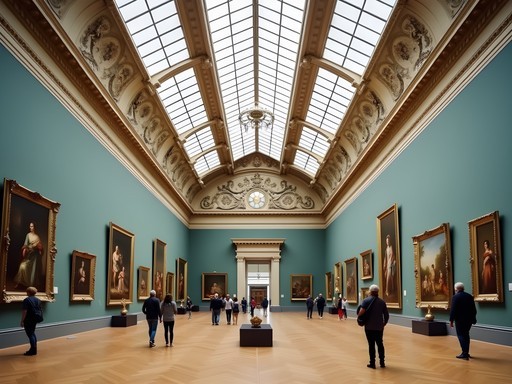


Comments
TravelBug89
That sunset shot of the Poolbeg Lighthouse is stunning! Making this my phone background!
Casey Andersson
Michael, your post couldn't have come at a better time! I just returned from Dublin last week and managed to visit the Custom House Quay on your recommendation. The maritime museum there is such a hidden gem - I was practically alone exploring the exhibits about Dublin's port history. The docent told me fascinating stories about the docklands that weren't in any guidebook I read. One tip for anyone heading to the Poolbeg Lighthouse - go at sunset if possible. The golden light hitting that red lighthouse while the city twinkles in the background created one of my favorite photos from the entire trip. Just be prepared for it to be windier than you expect!
Casey Andersson
This post brought back such vivid memories of my Dublin stay last winter! I actually booked a harbor-view suite at The Marker Hotel specifically to connect with Dublin's maritime element. From my window, I could see the lights of ships moving through the harbor at dawn while sipping my morning coffee. The Diving Bell was such an unexpected highlight - I spent nearly an hour there, fascinated by the engineering and human stories. For anyone visiting, I highly recommend taking the audio guide which connects all these waterfront sites with excellent historical narration. Michael, your comparison of Dublin's relationship with water to your houseboat experience is so poetic and spot-on. There's definitely something meditative about watching the Liffey flow through the heart of the city.
oceanqueen
The Marker is gorgeous! Did you try their seafood restaurant?
Casey Andersson
Yes! Their seafood platter was divine - all locally sourced from Dublin Bay. Perfect complement to the maritime theme!
journeyqueen6967
Just booked tickets to Dublin for January! Saving this post for my itinerary planning 😊
winterfan5739
Michael - you mentioned you stayed on a houseboat. Is that something tourists can book in Dublin? Sounds like an amazing way to experience the city's connection to water firsthand.
beachzone
Is the Jeanie Johnston tour accessible for someone with mobility issues? My mom uses a cane and we're planning a trip next spring.
photoguide
I went last year and it's pretty challenging with narrow stairs between decks. Maybe contact them directly? The Custom House might be a better option.
roammaster
Just got back from Dublin last week and wish I'd seen this post before going! We did visit the Jeanie Johnston which was incredibly moving - our guide was so knowledgeable about the famine history. But completely missed the Diving Bell! Adding that to the list for next time. The maritime side of Dublin definitely deserves more attention.
Bryce Diaz
Michael, your houseboat perspective brings such a unique angle to Dublin's maritime history! I walked the Great South Wall to Poolbeg Lighthouse last spring and it was absolutely transcendent - that red tower against the bay with the wind whipping around you feels like stepping into another world. The Diving Bell was closed for renovations when I visited though. Anyone know if it's reopened yet? I used my waterproof boots for the lighthouse walk and was grateful for them when the tide splashed over parts of the path.
springlife
The Diving Bell reopened about two months ago! They've added some new interactive displays too.
Bryce Diaz
That's great news! Adding it to my list for next time. Thanks!
photoguide
Finally someone writing about Dublin beyond the usual tourist traps! The Poolbeg Lighthouse Walk looks amazing in your photos.
Casey Andersson
Right? I've been to Dublin three times and never knew about half these places. Definitely saving this for my next trip!
wanderpro
How accessible is the Poolbeg Lighthouse Walk? Can you get there by public transport or is it better to drive?
freezone
Did it last year! You can take the 1 bus to Sandymount and walk from there. It's about 40 mins walk along the Great South Wall but totally worth it. Bring a windbreaker though - it gets super breezy!
wanderpro
Thanks! Will definitely pack a windbreaker then.
Venture X
Premium card with 2X miles, $300 travel credit, Priority Pass